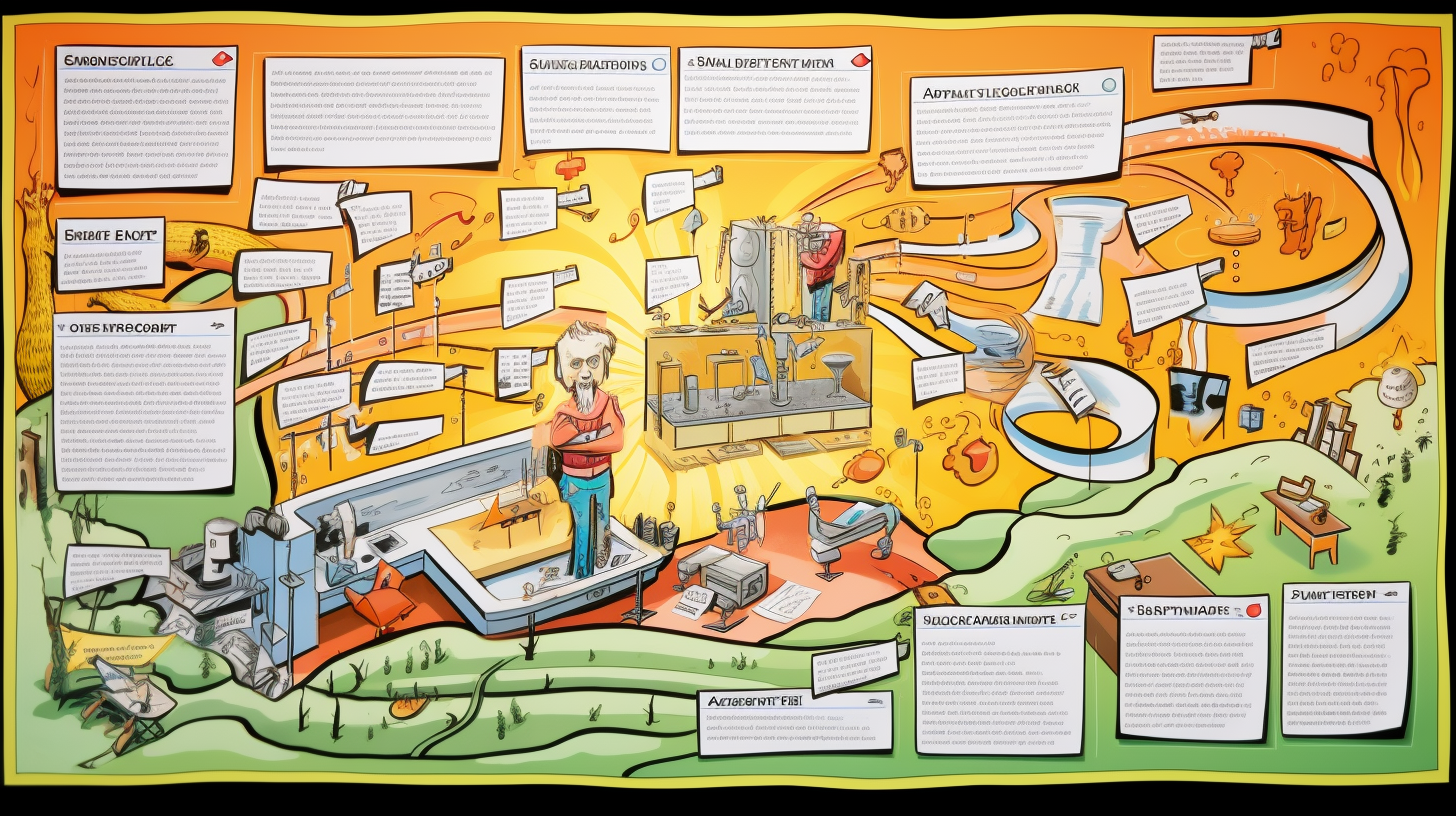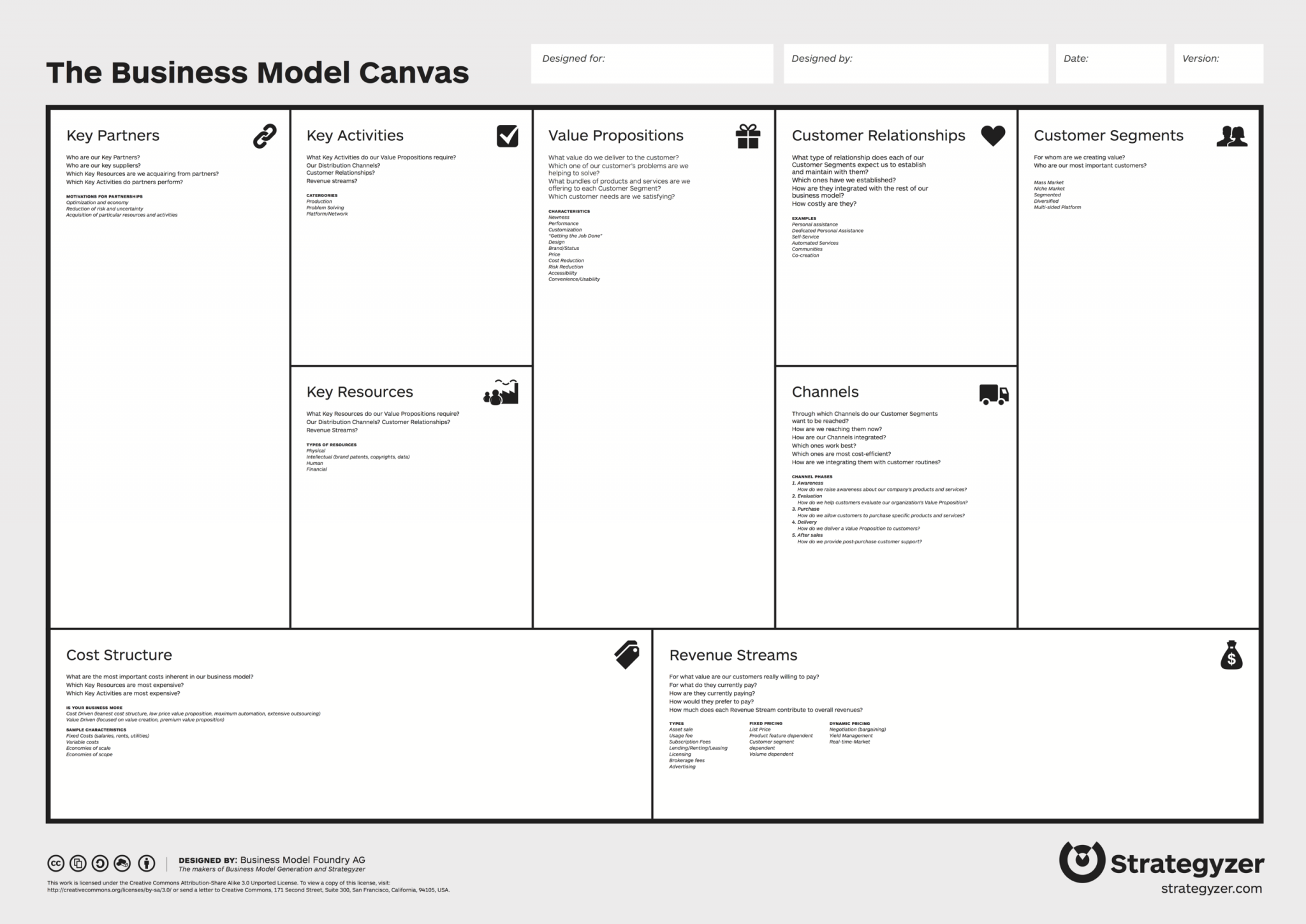
The Business Model Canvas is an essential tool for startups. Although it may seem complex at first glance, it is the preferred tool, for example, when seeking funding.
Business Model Canvas – Definition
The Business Model Canvas is a comprehensive framework created by Alexander Osterwalder in the early 2000s to identify all the necessary elements for launching a new business. It is one of the most widely used canvases today, and many other canvases have drawn inspiration from it to offer alternative versions, such as:
- Lean Canvas
- Product Vision Board
- Framing Starter Board
Here is what this canvas looks like:

This model consists of nine boxes to fill in, which are often interconnected:
- Customer Segments
- Value Propositions
- Channels
- Customer Relationships
- Key Resources
- Key Activities
- Key Partnerships
- Revenue Streams
- Cost Structure
The goal is to fill in each of these boxes to gain a comprehensive view of the new business.
Business Model Canvas – Example
Now, let’s take a closer look at each of these boxes, as their titles do not always fully explain the actual content to be included.
Customer Segments
Who are the customers you are targeting? It is crucial to identify the right individuals or businesses to focus on. These customers can be categorized to aid in understanding.
To assist you, you can use a tool created to simplify the creation of this canvas: the Value Proposition Canvas.
Example: teenagers, construction companies, local stores, etc.
Value Propositions
This part represents your offering. Why will customers buy your product/service/solution? And if you are not alone in the market, why would they choose your offering?
By working with the Value Proposition Canvas, you should be able to easily complete this box.
Example: Airbnb connects individuals to stay with local hosts.
Channels
What channels will you use to make your value proposition known? And what channels will you use to deliver your service/product/offer? Accurately targeting the right channel is crucial because poor targeting can lead to project failure.
For customer acquisition, you can consider using the BRASS model, which helps identify the right acquisition channels.
To accurately determine the distribution channel for your offering in your Business Model Canvas, I can recommend using tools like the Customer Journey or Start Your Day.
Example: Uber – 100% mobile app for users and word-of-mouth for customer acquisition.
Customer Relationships
How will you create relationships with each customer segment? Customer relationships should not be underestimated, as they can add significant value to your offering.
Example: customer service, toll-free helpline, etc.
Key Resources
What resources are needed to implement your product/service/offer and ensure long-term sustainability?
Example: facilities, raw materials, website hosting.
Key Activities
What are the key activities required to sustain your offering?
Example: online sales, matchmaking platform, etc.
Key Partnerships
Who are the key players necessary for your business operations? Do you need suppliers or partners? In this box of the Business Model Canvas, you list all the essential actors for your business to function.
Example: a delivery service provider, retail stores, etc.
Revenue Streams
How will your customers pay you, and will it be the customers themselves who pay? For instance, you could have a system where the customer does not pay directly, and a third party handles the payment. Explain how financial transactions will take place.
Example: advertising revenue, direct customer payments, etc.
Cost Structure
What are the main costs associated with the setup and maintenance of your business operations? It is essential to accurately determine the costs incurred by your business, as they can help identify the right strategy to achieve balance.
Example: rent, web hosting, etc.
Conclusion – Business Model Canvas
The Business Model Canvas is an excellent tool widely used by startups, especially when they are seeking funding. However, it is less commonly used by entrepreneurs who want to test an idea; in such cases, other canvases like the Lean Canvas are preferred.

Be the first to comment